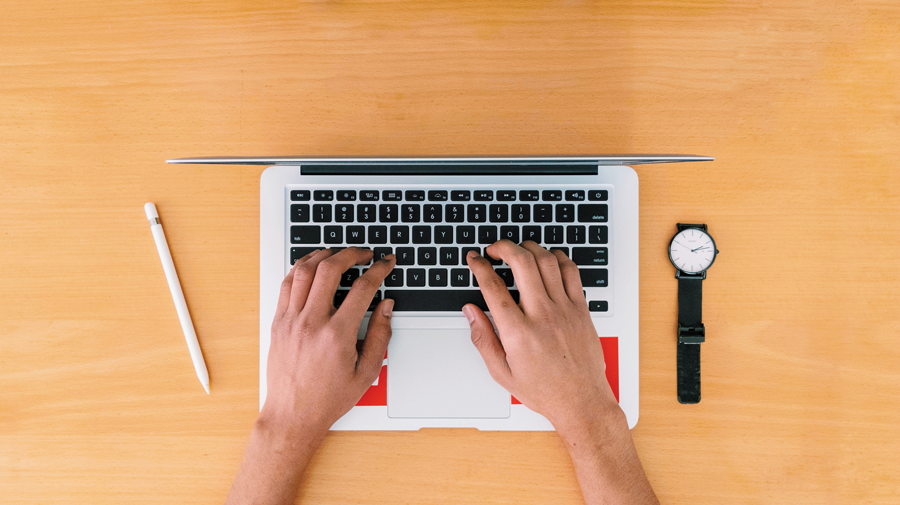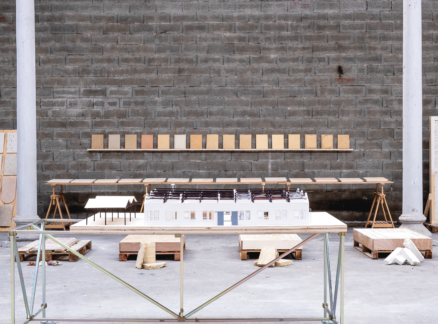
January 27, 2021
Replacing Design Assumptions with Fact in Today’s Uncertain Environment
Research and analysis show how the interiors industry is prevailing through the current economic downturn.

In our unpredictable pandemic-driven economy, the interiors industry—like any other—is operating on a lot of assumptions. And while some of that is the nature of the beast right now, it’s important to translate abstract notions into concrete, tangible takeaways and plan for what’s ahead.
So we homed in on three core areas of uncertainty: social media usage, connection, and sourcing. We spoke with A&D firms and manufacturing leaders to understand where the frictions lie and how they are adapting, and then overlaid that feedback with data and analysis. The results are insights showcasing how the interiors industry is prevailing through the current downturn.
Social media usage is evolving
While Pinterest is a leading source of inspiration for designers, it is also morphing into a cataloging tool. “Although Pinterest is often a favorite source of ‘inspirational’ images for clients, it is not something we look at for the work we do,” says Dwayne MacEwen, principal and creative director, DMAC Architecture. “To truly evolve and create original work through design, both history and inspiration [from Pinterest] only belong if they sneak in the back door of the design process.” In other words, Pinterest can be a source but not the source of inspiration.
On the contrary, Instagram is increasingly used for exploring and discovering new products. Designers today follow brands they love and brands followed by people they love. “Instagram has been a great enabler, with stories that showcase the work of talented designers in a glamorized light,” says Jessica Shaw, interior design director for The Turett Collaborative. “If you take the time to look for those kinds of social media moments, they create a new sense of community.”
In the face of pandemic unemployment, more designers are beginning to explore LinkedIn. Facebook, on the other hand, remains a more personal connection tool.
Technology hasn’t replaced our need to physically connect
Designers are fatigued with Zoom calls and crave in-person interaction. That said, ThinkLab research suggests many design firms won’t return to a physical workplace until the second quarter of 2021 at the earliest. Even then, A&D firms suggest a slow, phased reintroduction to in-person work, predicting 10 to 20 percent occupancy initially (though this may vary, especially by geography).
The interiors industry is thirsty for unique ways to connect, be it digitally or via modified in-person interactions. Designers in some regions are interacting outdoors but some firms are warning against it, especially if precautions aren’t considered. Some A&D firms are even operating in “pods,” which are proving to be most effective for limiting exposure at outdoor events.
Online continuing education units (CEUs) remain a favorite way to connect. According to ThinkLab’s Q3 2020 research, 67 percent of designers say digital CEUs are just as good as, or even better than, in-person CEUs. In fact, virtual CEUs were the only things in our recent research that outperformed their in-person equivalents.
For designers looking to forge new relationships, creating a personal connection is imperative. The good news is that three out of four designers believe effective new relationships can be built virtually. The bad news is that in a tightening market, designers are more likely to lean on trusted brands rather than trying something new.
“Communication is critical! Picking up the phone and giving my team or our vendors a call not only helps to smooth our workflow but also helps keep us connected in a way that email just can’t provide,” says Samantha McCormack, creative director, TPG Architecture. “Those little interactions throughout the day provide the spontaneity and the casual conversations that I’m missing while working from home.”
Sourcing via digital resources helps designers stay connected
Sampling materials remains one of the most prominent concerns for designers. With limited access to showrooms and firm libraries, they are struggling to obtain physical samples. The vast majority of designers mentioned using tools like Material Bank to aid in their sampling process. Others reported creating personal mini-showrooms using samples sent to their homes.
As the COVID-19 narrative continues, one thing is certain: The interiors industry is strong and resilient. While some of the changes we’re experiencing may be temporary, others may shed light on new ways of doing business. “I think we will carry these tools into in-person presentations when it is safe to do so,” says David C. Euscher, director-at-large, ASID Board of Directors. “The interactive and participatory nature of our technological adaptations enables a different kind of client engagement. It can provide a richer experience, especially in the conceptual phases of project development.”
Amanda Schneider is president of ThinkLab, the research division of SANDOW. Join in to explore what’s next at thinklab.design/join-in.
You may also enjoy “Strategic Elements of Post-Pandemic Workplace Design”
Would you like to comment on this article? Send your thoughts to: [email protected]
Register here for Metropolis’s Think Tank Thursdays and hear what leading firms across North America are thinking and working on today.
Recent Viewpoints
Viewpoints
Sustainability News Updates for Q2 2025





